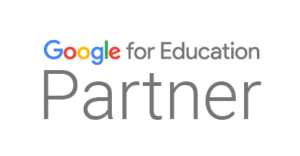Teachers have always carried more on their plates than most people realize. Between planning lessons, guiding students, managing classrooms and ensuring every child keeps up, grading often becomes the silent workload that stretches long into the evening. In 2025, that picture is finally shifting. AI in the classroom has moved from being a futuristic idea to becoming a practical tool that reduces manual effort and speeds up learning cycles. And importantly it is doing this in ways that support teachers rather than replace them.
The shift we saw in 2025
AI is no longer an optional experiment in schools. Educators across grades now rely on AI-assisted tools for everything from generating quiz questions to reviewing short answers. The ecosystem has matured enough that technology is not only identifying correct or incorrect responses but also offering insights about class-wide learning trends.
Another significant transition is the rise of rapid feedback. Students do not need to wait days to understand where they went wrong. AI systems can analyze answers instantly and offer understandable pointers. This is creating a more continuous flow of learning where students keep improving between classes rather than only after tests. At the same time conversations about fairness transparency and human oversight have become mainstream ensuring the technology is used responsibly.
How AI in the Classroom is transforming grading
AI is making grading faster and more consistent by removing repetitive tasks and bringing structure to the entire assessment workflow. It can evaluate objective questions almost instantly. It can also look at short responses and essays and map them to rubrics in a way that gives teachers a reliable starting point.
What makes it powerful is not just accuracy but the time it frees up. Teachers can now review AI assisted scores in batches and make quick adjustments instead of grading line by line. Another advantage is the immediate nature of formative feedback. Students receive guidance right away, so they know how to correct their reasoning while the concept is still fresh. This turns assessments into learning touchpoints rather than just end results.
How AI is supporting everyday teaching
Beyond grading AI is helping teachers understand classrooms better. It highlights common error patterns so teachers know which concepts require re-teaching. It points out students who may be silently struggling long before test scores reveal it. and can assist in planning lessons by suggesting activities aligned with specific learning outcomes and levels.
With these insights teachers can tailor instruction more precisely. Instead of guessing where learners might be stuck they can make targeted interventions. This creates a more responsive classroom where teaching adjusts in real time and students who need extra support receive it without delay.
Why teachers remain central to the process
Despite the growth of AI the heart of education remains deeply human. Teachers bring emotional intelligence cultural understanding and contextual judgment that algorithms simply cannot replicate. They know which student is having a tough week which parent needs reassurance and which learner requires a softer explanation.
AI may provide suggestions but the teacher decides what is right for the classroom. Human oversight ensures fairness especially in subjective evaluations. More importantly students trust teachers not tools. That relationship is irreplaceable and central to learning. AI is simply extending teachers’ capacity not challenging their role.
The risks we must speak about openly
For AI to be truly useful schools need to acknowledge its limitations. Automated systems can reflect bias if they are trained on narrow datasets. They may misinterpret creative or unconventional answers unless reviewed by a teacher. Privacy also matters. Responsible use means protecting student data and ensuring families understand how AI is being applied.
Being transparent about these concerns builds trust. When teachers are empowered to review override and question AI results the technology becomes safer and more reliable. The goal is not blind automation but thoughtful augmentation.
What the future looks like
The coming years promise smarter and more empathetic AI tools. They will explain their reasoning more clearly so teachers understand why a certain score was recommended. They will adapt better to regional languages and syllabi allowing more inclusive use across diverse classrooms. And they will become more aligned with day to day teaching rather than functioning as separate systems.
Education is moving towards an environment where insights arrive in real time and support is personalized without adding more workload to the teacher.
A closing thought
AI is not rewriting what teaching means. It is rewriting what teachers can achieve within the same number of hours. By removing repetitive work and providing timely insights it gives educators the space to do what only humans can do. Think connect guide inspire.
If you are exploring how smarter assessment and teaching tools can support your institution this is the right moment to start the conversation. Let’s build a future where technology strengthens learning without losing the human touch.




 1st Floor, H-31, Sector 63,
1st Floor, H-31, Sector 63,